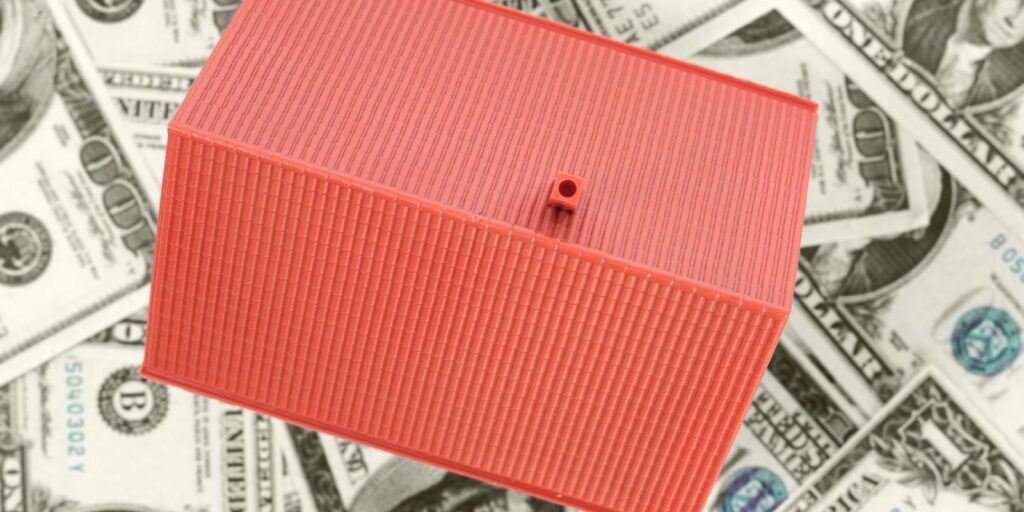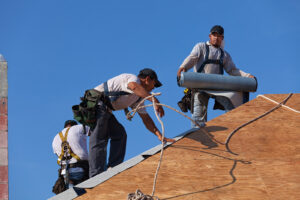The first thing that comes to mind with any major home renovation is cost, and roof replacements are no exception. There are many other things to think about during the process. But with all of the cost calculators and estimators out there, it is clear that price dictates most roof replacement decisions. That is understandable, as a roof replacement is a significant investment, but it is just as important to understand what you are paying for.
The first thing you need to do to estimate the cost of your roof replacement is to understand the key factors that will be calculated in the proposal. Below you will find the key components of roof replacement pricing to keep in mind.
1. The Roofing Material
Perhaps the most significant impact on your total cost will be the type of material you choose. Each material comes with its pros and cons. There are four main types of roofing materials to consider:
- Asphalt Shingles: The most common roofing material, these shingles can last up to 20 years on average. The type you choose (architectural or 3-tab) and regular maintenance can affect this lifespan. These shingles complement just about every home. And with their cost-effectiveness, it’s no surprise that so many homeowners choose them.
- Wooden Shingles and Shakes: Natural wood does tend to cost more than asphalt. However, the longer lifespan (up to 30 years) still makes them an appealing option. These aesthetically pleasing shingles require more maintenance, but they also have high energy efficiency, making them worth it to many homeowners.
- Metal: Becoming ever more popular in the last few years, metal roofs come in many different styles from traditional copper to modern red. With a longer lifespan (up to 50 years), this option also outperforms other roofing options in energy efficiency, durability, and maintenance costs. However, metal roofing does come at a much higher price point.
- Slate: This natural stone roofing material has the longest life span, an astounding 150 years! But with unparalleled durability, the weight can pose a challenge. Slate requires more material in the roof deck for support, which drives up the cost. The slate material itself is also going to cost much more than other roofing materials.
2. Pitch and Slope of the Roof
If your roof is steeper, it adds complexity to the staging and safety of your roofer. This means the general labor will be higher, adding to the cost of your roof replacement. For example, if your roof is not walkable because the slope is too steep, you will see higher pricing.
3. Roof Removal
Usually, the roof tear-off will be factored into the labor costs of your roof replacement contract. It takes time to tear down your existing roof, and there is a cost associated with disposing of the old roofing materials. So, metal and wood roofing systems will be less expensive in this aspect because they are easier to dispose of than asphalt. The weight of the roofing materials is another factor that will go into disposal costs.
4. Components Beyond the Shingle
Sometimes homeowners forget that there is more to a roof than just the shingles because that’s all we can see from the outside. There are many more components to a roofing system that you are purchasing when you get a roof replacement.
When you’re looking for a roofing contractor, pay attention to the underlayment and decking materials they plan to use. Also, make sure they are taking into account the insulation and ventilation for your unique home. If the cost seems too high, ask for a breakdown and discuss the options. Sometimes higher-cost materials are necessary or will save you money in the long run. But your contractor should be transparent about that during the proposal process.
5. Warranty Coverage
There are two types of warranties that come into play with a roof replacement – manufacturer and contractor.
The manufacturer’s warranty will protect the roofing materials and requires strict adherence during installation. Your contractor should follow these guidelines to maintain coverage on your roof, but you may experience higher roof replacement costs.
The individual contractor’s warranty will cover their workmanship. Look closely at the promises they make. Workmanship guarantees vary by provider, so you could see higher costs for better coverage.
Roof Replacement Services You Can Trust
The items above are just a few of the things that factor into the overall cost of a roof replacement. Roof replacement is a serious investment and not one that a homeowner should make lightly.
But the most important part of calculating the roof replacement cost is working with a contractor you can trust. They should be open to answering questions with a transparent proposal that you know is fair and reasonable.
With a project like this, it can be tempting to choose the least expensive and fastest proposal you get. But this is a decision you only have to make once about every 20 years. So remember, you often get what you pay for. Take the time to research your options so you can feel confident in your decision.




